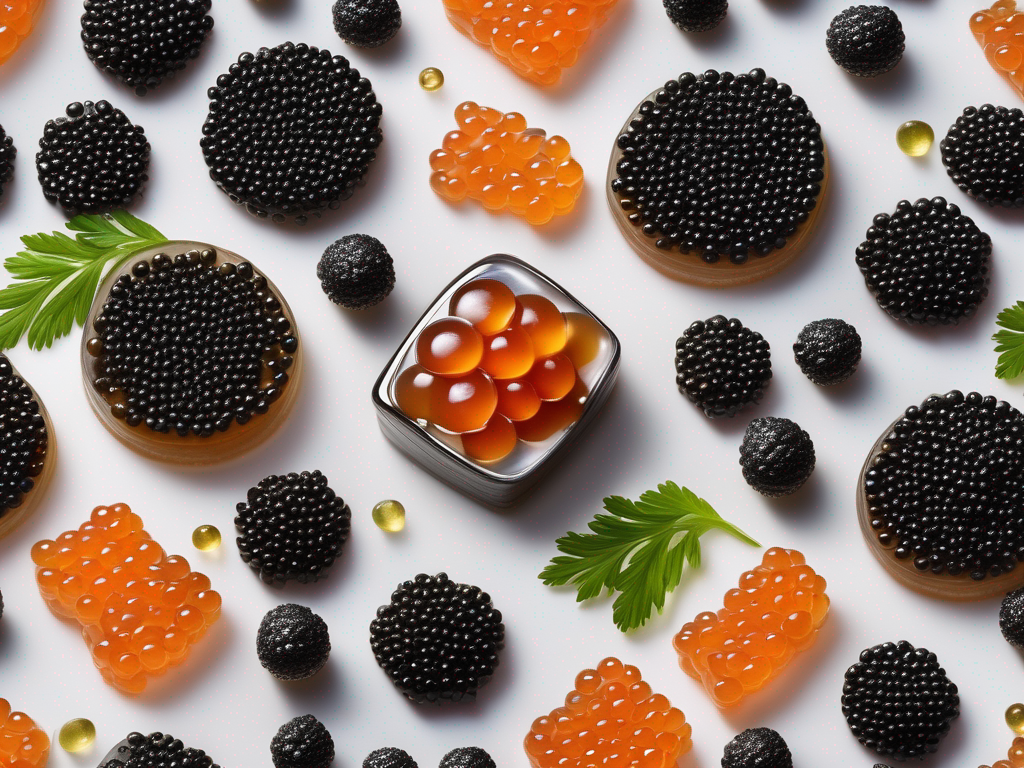
How to Identify Spoiled Caviar: A Comprehensive Guide
Get Your Free Food Safety Cheat Sheet
30 most common foods with instant answers. Print it and stick it on your fridge—completely free!
How to Identify Spoiled Caviar: A Comprehensive Guide
When indulging in the luxurious delicacy of caviar, it is crucial to ensure its freshness and quality to avoid any health risks associated with consuming spoiled caviar. Caviar, being a perishable product, can spoil if not stored and handled properly. In this guide, we will discuss essential tips for identifying spoiled caviar before consuming it. (Caviar)
Understanding Caviar Spoilage
Caviar is highly perishable due to its delicate nature and high moisture content. Spoiled caviar can pose health risks and may also lead to a disappointing culinary experience. Here are some common reasons why caviar may spoil:
Factors contributing to caviar spoilage:
- Improper storage: Caviar should be stored at a consistent cold temperature to maintain its freshness.
- Exposure to air: Oxygen can cause caviar to oxidize and deteriorate quickly.
- Contamination: Cross-contamination with other foods or improper handling can lead to spoilage.
- Expired shelf life: Caviar has a limited shelf life, and consuming it after the expiration date can be risky.
Signs of Spoiled Caviar
To ensure that you are consuming fresh and safe caviar, it is essential to be able to identify the signs of spoilage. Here are some key indicators that caviar has gone bad:
Visual signs:
- Change in color: Fresh caviar should have a consistent color that ranges from light to dark. If you notice discoloration or a faded appearance, it may indicate spoilage.
- Mold or unusual growth: Any presence of mold, unusual growth, or slimy texture on the surface of the caviar indicates spoilage.
- Cloudy liquid: If the liquid surrounding the caviar appears cloudy or milky, it is a sign of spoilage.
Smell and taste:
- Off-putting odor: Spoiled caviar emits a foul or rancid odor, signaling bacterial growth and decomposition.
- Unpleasant taste: Consuming spoiled caviar will result in a bitter, sour, or metallic taste, indicating that it is no longer safe to eat.
Texture:
- Soft or mushy texture: Fresh caviar should have a firm texture. If the eggs feel soft, mushy, or overly liquid, it is a sign of spoilage.
- Separation: If the eggs appear to be separating or clumping together unnaturally, it may indicate spoilage.
Tips for Safely Consuming Caviar
To enjoy caviar safely and ensure a delightful culinary experience, follow these tips for proper handling and storage:
- Purchase from a reputable source: Choose a trusted supplier known for their high-quality caviar products.
- Check the expiration date: Always check the expiration date on the caviar packaging and consume it before the indicated date.
- Inspect the packaging: Ensure that the caviar packaging is intact, properly sealed, and free from any damage.
- Store at the right temperature: Keep caviar refrigerated at a temperature between 28-32°F (-2 to 0°C) to maintain its freshness.
- Use clean utensils: When serving caviar, use clean utensils to prevent contamination and spoilage.
Conclusion
By familiarizing yourself with the signs of spoiled caviar and adopting proper storage and handling practices, you can enjoy this exquisite delicacy with confidence. Remember to trust your senses and prioritize food safety when consuming caviar to savor its unique flavor and texture without any concerns about spoilage. Stay informed, stay safe, and relish every caviar experience to the fullest! (Caviar)
Related Posts
Here are some other articles you might find helpful:
- The Ultimate Guide on How to Properly Store Caviar for Maximum Freshness
- DIY Solutions for Extending the Shelf Life of Caviar
- The Ultimate Guide to Preserving Bottarga Freshness in the Pantry
- How to Properly Store Bottarga to Extend Its Shelf Life
- Preserving the Freshness of Beluga Lentils in the Pantry
Authoritative Food Safety References
These agencies and university labs inform every tip and health precaution we publish.
USDA FoodKeeper – Cold Storage Guidelines
Official refrigerator, freezer, and pantry timelines maintained by the U.S. Department of Agriculture.
Visit USDA FoodKeeperFDA Produce Safety Rule & Grower Guidance
Field-to-fridge handling practices that prevent contamination of fruits, vegetables, and leafy greens.
Visit FDA Produce SafetyCDC Foodborne Illness Prevention Hub
Surveillance-backed guidance on pathogens, symptoms, and steps to reduce foodborne illness risk.
Visit CDC Food SafetyUC Davis Postharvest Technology Center
University research detailing optimal storage atmospheres for produce after harvest.
Visit UC Davis PostharvestPenn State Extension – Home Food Preservation & Safety
Peer-reviewed extension bulletins on safe canning, chilling, and reheating practices.
Visit Penn State ExtensionGet Your Free Food Safety Cheat Sheet
30 most common foods with instant answers. Print it and stick it on your fridge—completely free! Want more? Upgrade to the complete guide with 70+ foods.
Scan your food directly and get instant safety info using our AI-powered camera feature.